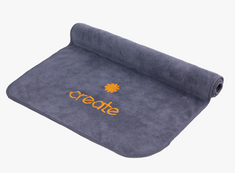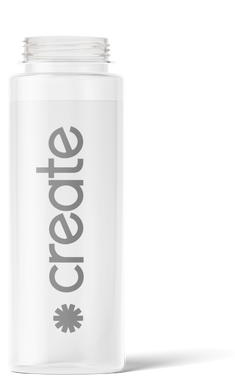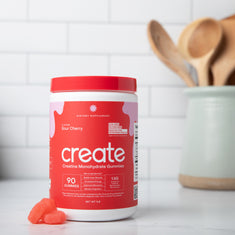Can Creatine Cause Rash? The Reality Behind The Risks
Fitness enthusiasts frequently experiment with different supplements as part of their quest for fitness, with creatine being a staple for many. But despite all of its advertised advantages, one question remains: can creatine result in a rash? This question piques the interest of gain-seekers, but caution is advised as skin reactions can affect confidence in addition to comfort. Navigating the complexities of supplementation requires an understanding of the possible connection between this well-liked supplement and skin problems. Exploring this relationship reveals important information and puts light on an aspect that is vital for anyone looking to maximize their fitness journey.
Understanding Of Rash After Taking Creatine Supplementation
Although it's uncommon, collagen rash is a result of skin irritation or allergic reactions after supplementation. Fitness enthusiasts can use it more wisely if they are aware of its symptoms and triggers.
Mechanism Of Action
Muscles naturally contain creatine, which helps with ATP regeneration and improves energy levels momentarily. It increases cell volume and hydration by drawing water into the cells. There is little evidence to directly link creatine to skin reactions; instead, it may have indirect effects through changes in individual hydration or sensitivities rather than a direct physiological mechanism.
Factors Influencing Skin Reactions
When people take large doses of creatine, they may become dehydrated or retain water, which can lead to skin reactions and sensitivities. Individual differences in allergies or metabolism may intensify reactions. Drug interactions or other supplements may make reactions worse. Recognizing these elements aids in identifying and reducing the risk of skin problems brought on by creatine.
Causes Of Creatine Rash
Although the precise cause of creatine-induced rash is unknown, it may result from impurities in some formulations, hydration changes, or individual allergic reactions. Some research points to possible triggers, but more investigation is required to produce solid proof.
Higher Dosage Effects
There is little scientific data pertaining to creatine dosage and skin reactions. A small number of studies indicate that higher doses may make dehydration-related problems worse and may affect skin sensitivity. Nevertheless, there are still conflicting results regarding the relationship between particular intake levels and the probability or severity of rashes, so more study is required to draw firm conclusions.
Individual Skin Sensitivity
Due to genetic predispositions, underlying skin conditions, or allergies, each person reacts differently to creatine supplementation. Genetic factors that affect enzyme activity or hydration levels may amplify sensitivities, and underlying skin conditions may exacerbate reactions. Comprehending these individual variations aids in evaluating the possible hazards of developing a rash as a result of using creatine.
Interactions With Other Substances
The relationships between diet and medication components and the skin reactions caused by creatine are still not well understood. Possible aggravations could result from taking nephrotoxic or diuretic medications at the same time. On the other hand, some hydrating substances or antioxidants may help to lessen the effects of dehydration on the skin. Comprehending these interplays facilitates the evaluation and handling of rash hazards while taking supplements.
Pre-Existing Skin Conditions
People who already have skin conditions such as dermatitis or eczema may be more vulnerable to rashes brought on by creatine. Reactions may be amplified by changes in the function of the skin barrier or by increased sensitivity. For those who suffer from such conditions, it is imperative to recognize these vulnerabilities, which calls for careful thought before beginning creatine supplementation.
Metabolic And Hormonal Factors
Rashes related to creatine may be indirectly influenced by metabolic changes or hormonal imbalances. Changes in metabolism may lead to altered levels of hydration, which may impact skin sensitivity. Although less researched, hormonal imbalances may worsen reactions. Nevertheless, additional research is necessary to obtain definitive insights into the relationships between these variables and skin responses to creatine.
Signs And Symptoms Of Rashes
Creatine-induced rashes occasionally show up as hives or swelling in addition to redness, itching, or skin irritation. When taking supplements of creatine, these symptoms frequently appear on the face, arms, or torso.
Primary Skin Reactions
Common symptoms of rashes brought on by creatine include pruritus (itching), erythema (redness), and dermatitis (inflammation). Hives or eczematous patches, usually on the arms, trunk, or face, may appear as lesions. The progression typically starts with redness and progresses to itching, with the degree of inflammation varying based on the sensitivity of the individual.
Secondary Manifestations
Creatine-induced rashes may cause pain, warmth, or changes in skin texture, such as flakiness or dryness, secondary to the primary symptoms. These symptoms worsen discomfort and interfere with day-to-day functioning. They also affect the person's perception and raise additional concerns, which frequently call for treatment or stopping creatine supplementation.
Distribution Patterns
Rashes brought on by creatine usually appear on exposed parts of the body, such as the face, arms, or torso, indicating a pattern of photodistribution. Individual differences do exist, though, with some people having rashes that are more dispersed throughout their bodies. The preference for areas exposed to the sun may indicate a tendency toward photosensitivity under some circumstances.
Duration And Persistence
Rashes brought on by creatine often appear days to weeks after supplementation begins. Their duration varies, but usually they go away a few days to a few weeks after the last dose. Persistent cases, on the other hand, might call for a medical evaluation because they might point to underlying conditions that require care in addition to stopping creatine use or prolonged sensitivity.
Systemic Effects
Rashes caused by creatine usually appear as localized skin reactions without any systemic effects. In these situations, fever, exhaustion, or other constitutional symptoms are uncommon. On the other hand, if systemic effects accompany skin reactions, this indicates a more serious allergic or systemic response that needs to be treated right away.
Treatment Options For Treating Rash Due To Creatine Supplements
The management of rashes caused by creatine entails stopping the use of creatine and treating the symptoms with topical corticosteroids or antihistamines. For additional management in severe cases, a medical evaluation might be necessary.
Topical Interventions
Topical corticosteroids reduce swelling and itching, which aids in treating the signs of a creatine-induced rash. Pain relief comes from ointments that contain calming ingredients like calamine or aloe vera. Long-term corticosteroid use can cause skin thinning or discoloration, but soothing ointments usually have few side effects and are primarily used to relieve discomfort and promote skin healing.
Oral Medications
Oral antihistamines reduce inflammation and itching in rashes brought on by creatine. (NSAIDs), nonsteroidal anti-inflammatory drugs, reduce pain. The severity of the symptoms determines the dosage and duration, and interactions with creatine are still mostly unknown. Because of the possibility of additive effects or unknown interactions between these medications and supplementing with creatine, caution is advised.
Hygiene And Skin Care Practices
Maintaining good hygiene, which includes routine moisturizing and gentle cleaning with mild, fragrance-free soaps, can help to manage rashes brought on by creatine. Skin irritation can be reduced by avoiding harsh chemicals, long periods of sun exposure, and excessive perspiration. Preventing and controlling the development of rashes can be achieved by emphasizing clean, dry skin and by using hypoallergenic products.
Temporary Discontinuation Of Creatine
A brief stop of creatine allows the rash to go away and aids in determining its cause. It is imperative that you speak with a healthcare provider before stopping, particularly if you have a medical condition. This break helps identify the relationship between rash and creatine, directing future steps toward safe and knowledgeable supplementation.
Consultation With Healthcare Professionals
It is essential to consult dermatologists or other healthcare professionals for a precise diagnosis and individualized treatment of rashes caused by creatine. Under expert supervision, risks related to skin reactions to creatine supplementation are reduced and appropriate assessment, trigger identification, and customized strategies are ensured.
Tips To Prevent Getting Rashed Again
Reduce the dosage, drink plenty of water, use high-quality products, and get allergy tested to avoid creatine rashes. Set balanced supplementation as a top priority and seek expert advice for individualized direction to prevent similar incidents in the future.
Gradual Dosage Introduction
When introducing creatine gradually—beginning at lower doses and gradually increasing—to people who are more sensitive to skin reactions, the body has time to adjust. This gradual approach makes it possible for better tolerance to creatine supplementation, which lowers the risk of sensitivity or reactions and offers a safer transition.
Hydration Practices
It's important to stay properly hydrated when taking creatine. It promotes general health and lessens the possibility of skin reactions brought on by dehydration. Staying properly hydrated promotes a balanced and successful supplementation experience by helping to regulate body functions, improve skin health, and reduce the possibility of negative reactions.
Regular Skincare Routine
Maintaining a regular skincare routine is crucial for the health of your skin, especially if you're taking creatine supplements. Gentle cleansing, frequent moisturizing, and avoiding harsh products all help to preserve skin integrity and reduce the likelihood of sensitivities or irritations. Making a gentle routine a priority helps maintain a healthy skin barrier and reduces the possibility of adverse reactions when using creatine.
Monitoring For Early Signs
When taking creatine, it's important to be aware of early warning signs like redness or itching. Early detection can strengthen preventive measures, such as modifying dosage or consulting a specialist, and may stop the worsening of skin reactions. Early detection allows for prompt action, reducing the severity and effects of potential rashes brought on by creatine.
Quality Of Creatine Product
Choosing premium creatine from reliable suppliers is essential. Supplements may contain additives or contaminants that cause negative reactions, depending on their formulation and level of purity. Selecting trustworthy brands guarantees safer products, lowering the possibility of impurities and limiting any negative effects that may arise from taking supplements containing creatine.
Shop Now Our High-Quality Creatine Gummies
Learn about our exceptional creatine gummies for a convenient and successful supplementation experience. Bid farewell to any potential skin-related problems that are frequently linked to other supplements. Our gummies, which are made with quality in mind, provide a tasty and secure method to increase performance without sacrificing purity or composition. Accept this easy way to improve your fitness journey. Discover the advantages of our premium creatine gummies without having to worry about skin-related issues. Get your supplements today for a smooth and fun experience.











